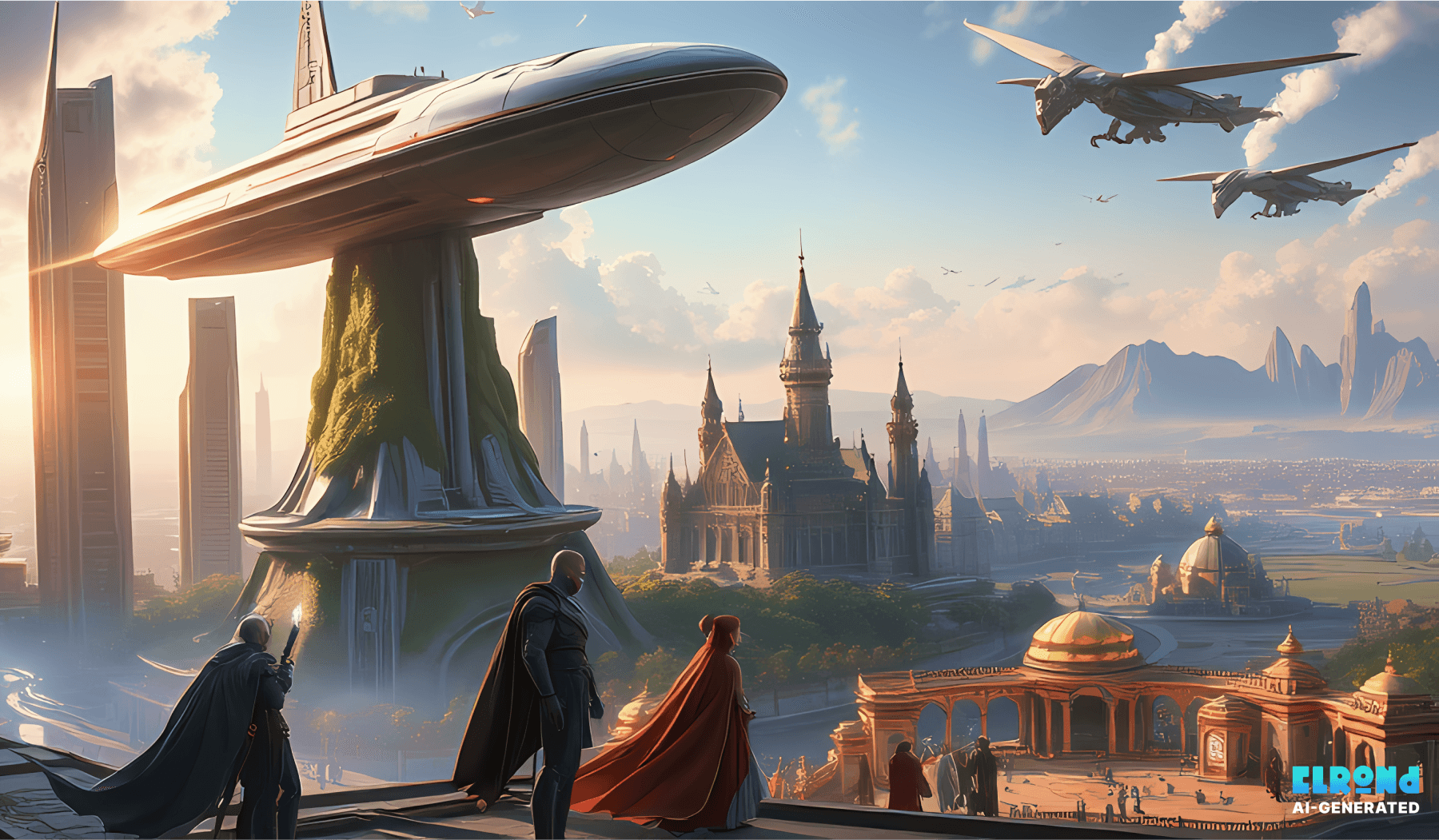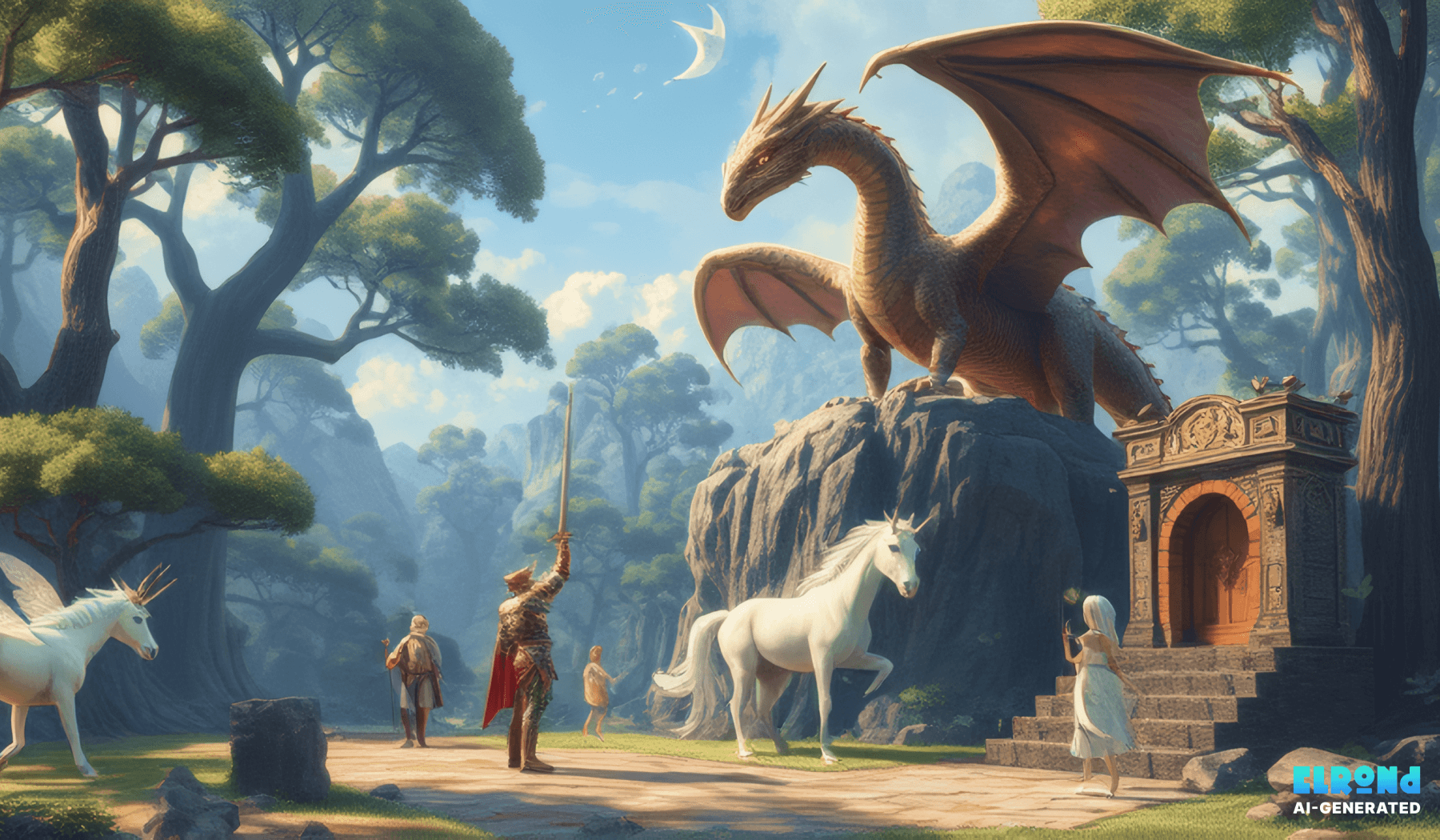Exploring the seamless blend of sci-fi and fantasy in literature’s most captivating works.
The blending of science fiction and fantasy has been a hallmark of speculative literature for decades. Both genres explore vast, imaginative worlds beyond our own, but where sci-fi relies on futuristic technology and speculative science, fantasy thrives on magic, myth, and the supernatural. Yet, when these two genres combine, they create a unique and compelling fusion that allows for limitless possibilities. In this article, we’ll explore the best works that bridge the worlds of sci-fi and fantasy, blending the hard science of technology with the dreamlike wonder of magic.
1. Dune by Frank Herbert: The Epic Fusion of Political Intrigue and Mysticism
One of the best examples of the fusion of sci-fi and fantasy is Frank Herbert's Dune. Set in a distant future, Dune is a story of political power, desert planets, and mystical visions, blending elements of both genres seamlessly. On the surface, Dune is a hard sci-fi novel, full of advanced technology, space travel, and a complex interstellar political system. Yet, it is equally rich in fantasy elements, particularly with the mystical powers of the Bene Gesserit, a secretive sisterhood that practices mind control and genetic manipulation.
The Dune series doesn’t shy away from combining advanced science with ancient rituals, making it a brilliant example of how sci-fi and fantasy can coexist. The spice melange, a substance central to the story, serves as a gateway to prescience and mystical visions, blurring the lines between science and magic. Dune shows that even in a technologically advanced society, ancient beliefs, rituals, and magic can still play a central role in shaping the future.
2. The Broken Earth Trilogy by N.K. Jemisin: Earth’s Magic Meets Science
N.K. Jemisin’s The Broken Earth trilogy is another brilliant example of how sci-fi and fantasy can blend together. In this series, the Earth itself is a living entity, and its catastrophic events are the result of orogeny—a form of magic that allows certain individuals to control seismic forces. The world is plagued by constant natural disasters, and the survivors of these events must navigate a society that uses both science and magic to survive.
What makes The Broken Earth so unique is the way it explores the tension between science and magic. The orogeny is depicted in a scientific context—rooted in geological phenomena—but its effects feel supernatural. This fusion of magic and science is not only a narrative device but also serves as a commentary on how we view nature and the environment. The characters in The Broken Earth are forced to navigate a world where the boundaries between the natural, scientific, and magical are not so easily defined.
3. The Dark Tower Series by Stephen King: A Multiverse of Magic and Technology
Stephen King’s The Dark Tower series is a prime example of a fusion between science fiction and fantasy. The series follows Roland Deschain, a gunslinger on a quest to find the Dark Tower, a mythical structure that exists at the center of all worlds. The world of The Dark Tower is a blend of western, fantasy, and post-apocalyptic elements, where magic and technology exist side by side.
In the world of The Dark Tower, advanced technology such as the "ka-tet" (a group bound by fate) coexists with powerful magic, and characters encounter everything from psychic abilities to parallel universes. King’s creation of a "multiverse" concept allows for the blending of multiple genres, where time, space, and reality are fluid. The novel explores themes of fate, destiny, and the nature of the universe, all while seamlessly weaving together fantasy elements (such as sorcerers, magic, and mythical beasts) with the futuristic technology that shapes the protagonists' journey.
4. The Chronicles of Amber by Roger Zelazny: A Universe of Magic, Science, and Infinite Possibilities
Roger Zelazny’s The Chronicles of Amber is a groundbreaking series that blends the best elements of both science fiction and fantasy. At its heart, the series is a tale of family betrayal, magical intrigue, and political power. However, the world of Amber is much more than just a fantasy realm; it is a multiverse, with each parallel world being accessible through the use of a magical card that allows characters to "walk" between dimensions.
The idea of parallel worlds, combined with Zelazny’s innovative use of technology in the form of the magical “trumps” (cards) and the family’s ability to manipulate reality, creates a hybrid space where magic and science coexist. The characters navigate these worlds, combining their innate magical abilities with technological innovations, making The Chronicles of Amber a fantastic example of genre-blending.
5. The Inheritance Trilogy by N.K. Jemisin: Gods, Magic, and Technology Intertwined
In The Inheritance Trilogy, N.K. Jemisin again masterfully blends elements of both fantasy and science fiction. Set in a world where gods walk among humans, magic is an essential part of life. However, the world Jemisin builds is also one that reflects the complexities of technological advancement, class struggles, and political power.
In this world, technology is often intertwined with magical elements, such as the power to create living weapons or control entire cities through divine artifacts. The gods themselves are not just magical beings but have been shaped by centuries of human manipulation, showcasing how technology, in this case, is an extension of divine or magical power. Jemisin’s work pushes the boundaries of both genres, using magic as both a source of power and a tool of oppression, while also exploring how technology shapes and influences human society.
6. Star Wars: The Expanded Universe – Blending Galactic Technology with Mystical Force
Although the Star Wars franchise is widely recognized as a science fiction epic, it is also deeply rooted in fantasy elements. The Force, a mystical energy that gives Jedi and Sith their power, is a key element that bridges the gap between the two genres. The expansive Star Wars universe, with its advanced starships, droids, and galactic civilizations, relies on sci-fi concepts such as space travel and alien species, but it also features the Force as a mystical, almost magical presence that influences the fates of its characters.
In the Star Wars Expanded Universe (now known as Star Wars Legends), writers delve further into this fusion, offering stories where ancient mystical powers, futuristic technology, and political intrigue intersect. The Force serves as a unifying element that allows magic to coexist with the high-tech aspects of the galaxy, giving Star Wars its unique blend of sci-fi and fantasy.
7. The Expanse Series by James S.A. Corey: Where Political Intrigue Meets the Supernatural
The Expanse series by James S.A. Corey is primarily a hard sci-fi series, set in a future where humanity has colonized the solar system. However, the series also introduces elements of the fantastical, particularly in the form of the "protomolecule"—an alien artifact with powers beyond human comprehension. While the protomolecule is described scientifically, its effects feel supernatural, altering biology and transforming planets in ways that defy conventional science.
The series blends advanced space technology with these alien powers, creating a world where the line between science and fantasy becomes blurred. The Expanse is a brilliant example of how futuristic technology and the supernatural can coexist, creating a universe that feels both grounded in reality and filled with unexplained mysteries.
Conclusion: A Boundless Frontier for Imagination
The fusion of sci-fi and fantasy opens up an endless frontier for imaginative exploration. By blending the speculative nature of science fiction with the boundless creativity of fantasy, authors create worlds that are both familiar and otherworldly. These works invite readers to question the boundaries of possibility and explore how technology and magic can exist side by side, shaping the course of history, civilization, and human destiny.
Whether through epic space operas like Star Wars, the mind-bending alternate realities in The Chronicles of Amber, or the magical realism of The Broken Earth, the fusion of sci-fi and fantasy provides a rich, diverse landscape where anything can happen. These works remind us that, in literature, the only limit is the imagination—an imagination that can bridge the worlds of technology and magic, creating tales that are as exhilarating as they are thought-provoking.


